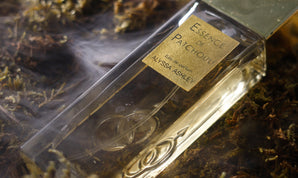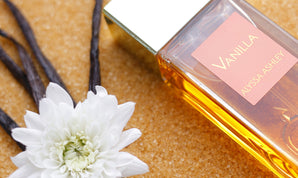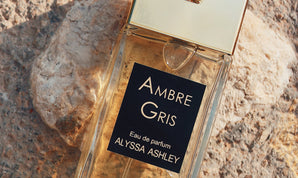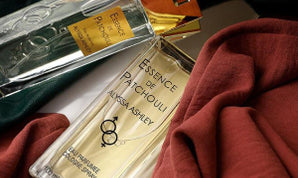I've often told you about my relationship with art so I'm sure you know that I consider it to be one of the main sources of inspiration for my perfumes.
Sometimes a detail, a color, a light or even a concept of a work of art is enough to awaken the passion and inspiration within me.
This almost always happens, in fact I can naturally recognize in the notes of some of my compositions (even the most historical) the characters of a style, a movement, an artist.
I'll be honest: sometimes a fragrance arouses more inspirations in me or, vice versa, a work of art reminds me of different, even opposite, compositions or notes. This happens because fragrances have numerous facets and the same goes for art with its various interpretations, but also with our personality (is it a coincidence?).
Who among us can say they have a personality defined by a single word? We could be dreamers but we would certainly hide a rational side, which maybe comes out at a precise moment.
And who can say with certainty that a certain work of art expresses only that or those concepts without hiding a more personal interpretation?
With the fragrance White Musk by Alyssa Ashley it happened just like that: a perfume that many could define classic, some even simple, but which reveals a decisive and dynamic side.
The White Musk and the Tutu: the (not too) strange couple
Let's unveil the gaps right away: the tutu I am referring to is the one of the dancers painted by Edgar Degas, but I am sure that this clarification was not necessary since we could say that all over the world, although more than a century has passed, the symbol of the classical dancer is still a prerogative of the painter.
But why Degas' ballerinas and White Musk? It would be too cliche to say that the delicacy of this perfume recalls the elegance and gracefulness of classical ballerinas, although it is certainly a first and simplistic statement.
In reality, both, deep down, hide another side of the coin, another soul.
This constrat, both of the perfume and of the painter, have always attracted me because they pushed me to go beyond, beyond the common perception of things (which should be done in all areas) and enabled me to try capture more subtle shades and why not, every now and then, adopt a different point of view.
Edgar Degas: the non-impressionist impressionist
If you ask almost anyone about the artistic movement in which Degas worked in, you will almost certainly get the answer "impressionism". This is because his name always appears under the 'impression painting' in our history books, along with all the others.
But it's not that simple. He has been defined in many ways: the first of the Impressionists, the least Impressionist of the Impressionists, the most Realist of the Impressionists. As I anticipated, it’s necessary to go beyond what is commonly believed.
His famous ballerinas are the on canvas transposition of the diversity of interpretation that is linked to the same painter.
Look at one of the many paintings that depict them:

In Degas’ canvases, the grace and elegance that characterizes this harsh discipline and its professional look, are transformed into fervent spontaneity, and even clumsiness.
In fact, it was not the sweetness of the movements of classical dance that struck Degas, but rather that it had offered him a pretext for his studies on movement.
The classical training of the painter, his Italian studies, had immediately brought him closer to historical painting and to the painting of truth (although he did not actually approach the current of pictorial reality).
Which is why, through Degas’ works, the dancers are not synonymous with elegance, sweetness, composure, gracefulness, they are not wrapped in a golden aura, almost divine, the same way it still happens today, but bring to light the marginal details accurately portrayed by the painter, the situations in which the dancers are inserted reveal something else.
The painter was therefore able to bring the observer on the athletic level of the dance, linked to the preparation, the warm-up (in fact, the moments before or after were portrayed by Degas) to the decisive and repeated movement. But also a new, real, beauty.
The White Musk: behind the idea of the "scent of clean"
I've told you how Degas' young women-dancers are not shown as fragile creatures but reveal a strong, determined soul, bent on sacrifice to achieve their dreams.
The same goes for my White Musk. Many mistakenly link this scent to Oak, White Musk and in general to the scent of cleanliness.(I tell you more about it in this article)
This fragrance descends directly from the original MUSK, it is lighter, fresher and more floral. In fact, its olfactory pyramid contains a dance of white flowers such as Bergamot and Jasmine whose lightness is reminiscent of a ballerina's tutu, which is precisely why I chose to use it as the reference image of the new Eau de parfum version of White Musk.









